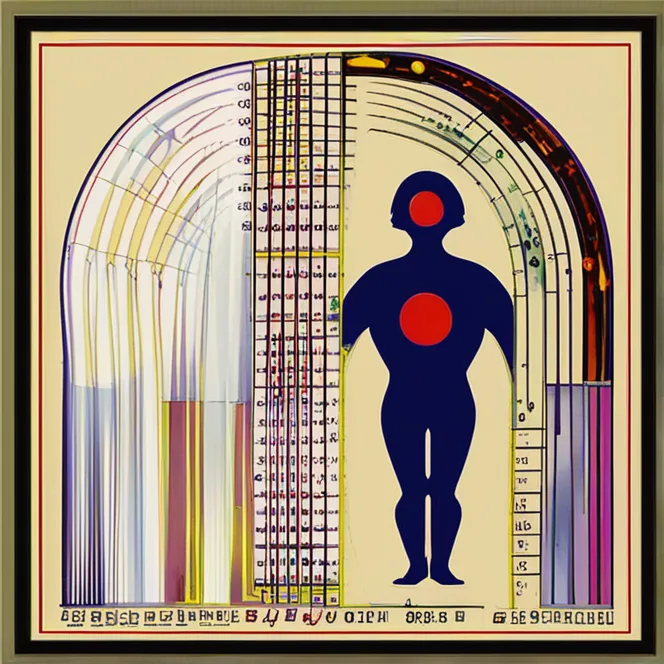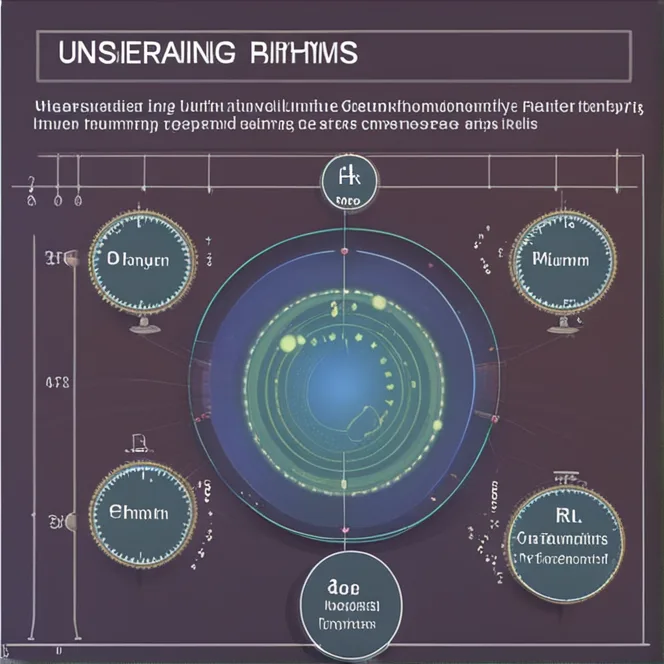
Understanding Human Biorhythms
Explore the fascinating concept of biorhythms to understand the natural cycles that influence human physical, emotional, and intellectual states.
article by Adrian Wallace
An Introduction to Biorhythms
In the realm of physiological and holistic studies, the concept of biorhythms presents a captivating model that aims to chart the natural rhythms of life that impact our day-to-day functioning. Biorhythms are predicated on the idea that three fundamental cycles influence our physical, emotional, and intellectual abilities. The notion, hailing from the late 19th century, posits that these cycles start at birth and undulate in predictable patterns throughout our lives. While mainstream science often regards biorhythms as a pseudoscientific concept, those who advocate for its consideration suggest that attunement to these rhythms can lead to a more harmonious existence.

The Three Core Cycles
Central to the biorhythm theory are three primary cycles: the physical cycle of 23 days, the emotional cycle of 28 days, and the intellectual cycle of 33 days. Each of these cycles is thought to oscillate between positive and negative phases. The physical cycle governs aspects such as stamina, coordination, and strength. The emotional cycle affects mood, creativity, and perception. The intellectual cycle is linked to analytical thinking, learning, and problem-solving. A high phase in any cycle suggests a time of heightened ability, while a low phase may indicate a period of reduced competence.

Charting Your Biorhythms
Many adherents of biorhythm theory advocate for charting one’s biorhythms to predict and prepare for the fluctuations in abilities and dispositions. This usually involves calculating the cycles mathematically starting from the individual's date of birth. These calculations can be represented graphically, with the x-axis signifying time (days), and the y-axis displaying the high and low phases of the cycles. Enthusiasts use these charts to make informed decisions about critical activities in personal and professional spheres, such as choosing a date for an athletic competition or a significant business meeting.
Biorhythms in Practice
Although biorhythms are not unanimously recognized or utilized in scientific communities, the concept finds a home in personal development and wellness circles. Some individuals report improved life quality by aligning their activities with their perceived biorhythmic states, whether that involves scheduling challenging tasks during a high intellectual phase or avoiding undue stress during a low emotional period. In certain cases, it’s suggested that awareness of one’s biorhythmic patterns can also promote understanding and empathy in relationships, attributing conflicts or compatibility to the natural ebb and flow of emotional rhythms.

Skepticism and Applications
It’s important to note that the scientific community generally does not support the predictive accuracy of biorhythms. Multiple studies have failed to find a solid statistical basis for the claims made by biorhythm theory. Despite this skepticism, the notion continues to inspire interest, likely due to the human penchant for systems that allow us to anticipate and thus potentially control aspects of our lives. In practical terms, the use of biorhythms is typically personal and subjective, often integrated with other well-being practices such as meditation, yoga, and alternative therapies.
While biorhythms as a scientific hypothesis may not stand on firm ground, the concept offers an intriguing lens through which one can introspect on the cyclic nature of life’s highs and lows. Whether it's viewed as a personal tool for self-awareness or dismissed as ungrounded theory, the discussion of biorhythms continues to carve out its own niche in the conversation about human wellness and potential. As with many things of a similar nature, individual experience and belief often dictate the value and utility one might derive from exploring their own biorhythmic patterns.
Published: 12/6/2023
Modified: 12/6/2023
More predictions
Come back here soon to learn more about yourself and your future


Magic Connection of Astrology and Biorhythms
Uncover how astrology and biorhythms intertwine to influence our daily lives, offering insights into personality traits and future tendencies.


Biorhythms and Astrology: A Guide to Celestial Harmony
Explore the captivating relationship between astrological influences and biorhythms, and how they intertwine to shape our lives.


The Ebb and Flow of Energy: A Biorhythmic Analysis
Unveil the intriguing world of biorhythms and their influence on your daily life, with insights into synchronization with natural cycles for enhanced well-being.